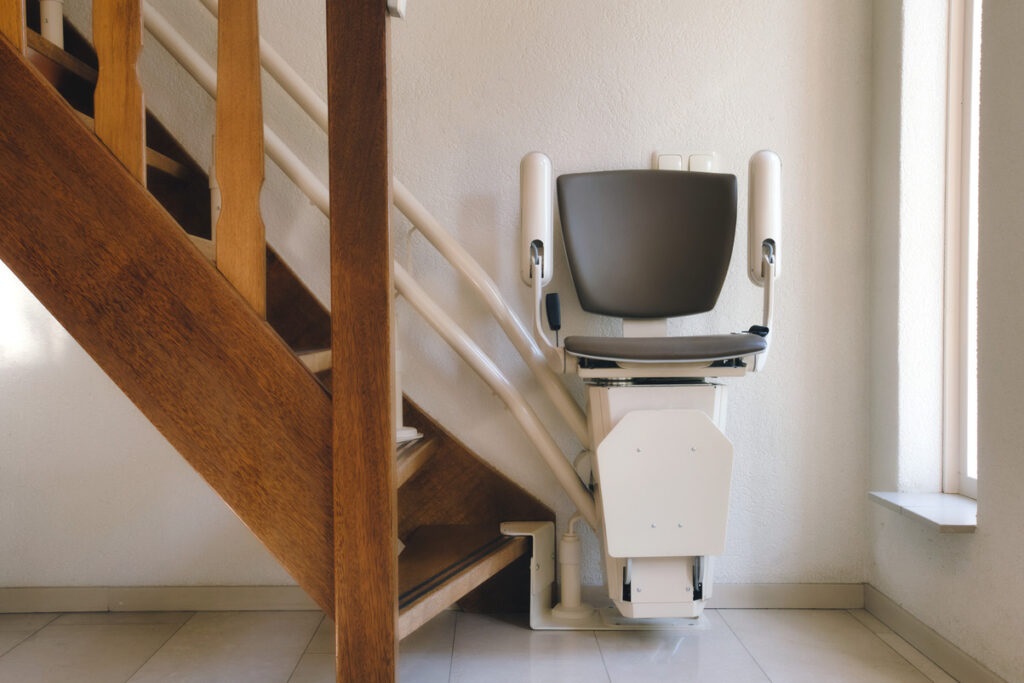In the modern era, where inclusivity and accessibility are increasingly recognized as fundamental rights, the importance of mobility solutions cannot be overstated. Among these solutions, the wheelchair lift for home stands out as a pivotal innovation, designed to bridge the gap between mobility limitations and the freedom to move within one’s own living space. This article delves into the essence of wheelchair lifts for homes, their operation, benefits, potential beneficiaries, and specific reasons why they are indispensable, especially in settings like old age homes.
What is a Wheelchair Lift for Home?
A wheelchair lift for home is a mechanical platform designed to transport a person in a wheelchair from one level of a home to another. This can include movement from the ground to an elevated entrance, between floors inside the home, or overcoming smaller steps and barriers that could otherwise be insurmountable. These lifts are engineered to ensure safety, reliability, and ease of use, making them a crucial addition to any accessible home design.
How Does a Wheelchair Lift Operate?
Wheelchair lifts for homes operate on simple yet effective mechanical principles. The core components include a platform, drive mechanism (hydraulic, electric, or screw-driven), controls, and safety features. Users can easily maneuver their wheelchair onto the platform, secure it if necessary, and use the controls to ascend or descend. Safety features such as anti-slip flooring, barriers, and emergency stop buttons ensure a secure operation throughout the lift’s journey.
Benefits of Getting a Wheelchair Lift for Home
The installation of a wheelchair lift in a residence brings with it a multitude of benefits:
Accessibility: It provides direct and effortless access to different levels of a home, eliminating the need for strenuous effort or external assistance.
Independence: Users can move freely within their home without relying on others, fostering a sense of autonomy and dignity.
Safety: Reduces the risk of falls and injuries associated with attempting to navigate stairs or uneven surfaces.
Property Value: Installing a wheelchair lift can increase the appeal and functionality of a home, potentially boosting its market value.
Quality of Life: Enhances overall quality of life by removing physical barriers, allowing users to enjoy every part of their home.
Who Would Benefit from a Wheelchair Lift for Home?
While the primary beneficiaries are individuals who use wheelchairs, many others can also gain from the installation of a home wheelchair lift, including:
People with mobility impairments or physical disabilities.
Elderly individuals who face challenges in navigating stairs.
Anyone with a temporary injury that limits their mobility.
Families or caregivers seeking safer ways to support their loved ones’ mobility needs.
Wheelchair Lifts for Old Age Homes: A Necessity
For operators or managers of old age homes, the decision to install a wheelchair lift should be considered a priority for several compelling reasons:
Diverse Mobility Needs: Old age homes cater to residents with varied levels of mobility. Wheelchair lifts ensure that all residents, regardless of their physical capabilities, have access to the full range of facilities.
Enhanced Safety: The elderly are at a higher risk of falls and related injuries. Wheelchair lifts provide a safe mode of transportation between different levels, significantly reducing this risk.
Promoting Independence: As individuals age, maintaining independence becomes increasingly important. Wheelchair lifts allow residents to move freely and independently within the premises.
Compliance and Inclusivity: Installing wheelchair lifts is a step towards complying with accessibility standards and laws, demonstrating a commitment to inclusivity and equal access for all residents.
Community and Engagement: By facilitating easier movement, wheelchair lifts encourage more social interaction and participation in communal activities, vital for mental and emotional well-being.
In conclusion, wheelchair lifts for homes are more than just a convenience; they are a transformative addition that can significantly enhance the lives of individuals with mobility issues, particularly in communal living environments like old age homes. By prioritizing accessibility and independence, the adoption of wheelchair lifts reflects a broader commitment to inclusivity and the recognition of mobility as a universal right. For those considering this investment, the benefits clearly outweigh the costs, paving the way for a more accessible and inclusive future.




